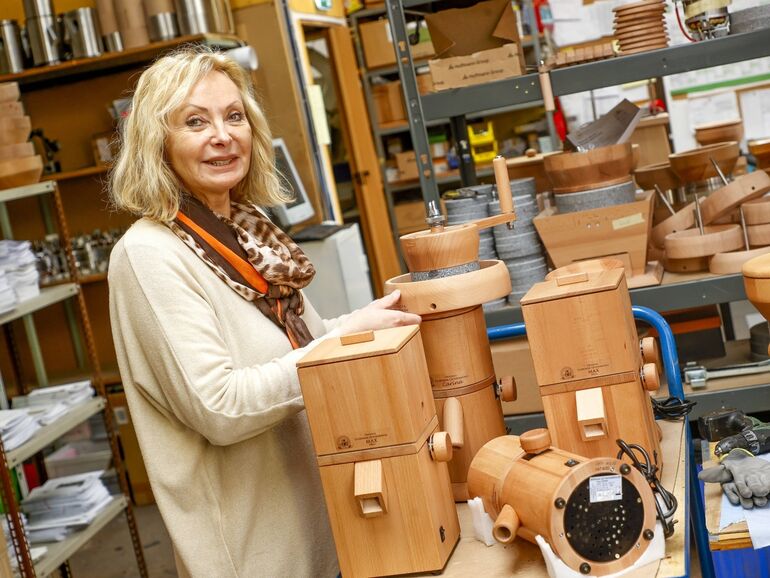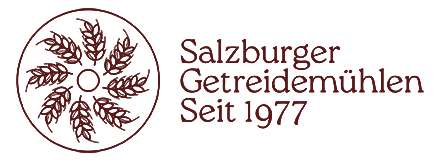
Article of the Salzburger Nachrichten from March 22, 2022 by IRIS BURTSCHER –
PICTURE: © SN/robert ratzer
Millstones are ground at a workbench, and wooden parts are joined together next to it. Next door in the office, the phone rings every minute. The demand for Salzburg grain mills is high. And since the beginning of the Russian attack on Ukraine, it has increased once again. “It’s almost wiping us out,” says Christine Thurner, head of Agrisan, which has been building Salzburg’s grain mills since 1977.
The first boom came with the pandemic, when many discovered bread baking as a new hobby. The high demand came at an inopportune time for Agrisan: A short time later, the Chinese owners sent the Styrian engine manufacturer ATB into bankruptcy. And Thurner found himself without a supplier from one day to the next. Chinese engines she did not want to buy. “It’s a glumpert,” she says. After three quarters of a year, she found replacements in Italy, Germany and Hungary.
However, mills without motors are currently the most in demand. “Even in the fall, when the blackout issue was present, many customers wanted hand mills,” Thurner says. Now, with the war in Ukraine, orders went through the roof. “People want to be more independent of the power supply.” There is currently a twelve-week wait for the MH8 model. Whether with or without a motor, the boss is pleased that more people are finding their way back to a healthy diet. “People who grind their own flour are more concerned about nutrition.”
Christine Thurner in der Werkstatt der Salzburger Getreidemühlen.
Der Mahlstein ist aus Granit, das Innere der Mühle aus Holz.
Auch Flockenquetschen werden in Hallein gefertigt.
Gebaut werden elektrische Mühlen und Handmühlen aus Buche-, Nuss- oder Eichenholz mit viel Handarbeit.
Gebaut werden elektrische Mühlen und Handmühlen aus Buche-, Nuss- oder Eichenholz mit viel Handarbeit.
The manufactory is small. A dozen employees work here. The boss is proud that half of the workforce are women, who are also well represented in the workshop. The company was founded by Thurner’s brother Johann. The first mill was built by the then Palfinger engineer for his wife. After more and more orders came through word of mouth, he went into business for himself. When he died unexpectedly in 2008, his sister Christine took over. Selling the company was out of the question for them, despite takeover offers. A lot of technical knowledge died with her brother. “But we fought through it,” she says. Step by step, things started to look up again.
The majority of the mills are sold in German-speaking countries. But orders come from all over the world. Spelt, rice or wheat are ground with it in a Greek monastery as well as in a Japanese bakery. A buyer from Alaska recently thanked us with a photo of the mill in the snow. Orders were received from Montana or the Virgin Islands. “We learn geography here, too,” Thurner says. Shipped to 70 countries.
Virtually all components of the grain mills come from Austria or a neighboring country. Not only the exterior, but also the grinding chamber is made of wood instead of plastic. In addition, there is a granite grinding stone and stainless steel thread. “It lasts longer. But the thread costs us as much in purchasing as a competitor’s mill costs in sales,” Thurner says. 580 Euros is the price for the cheapest piece, more than 2000 Euros for larger models. “We are three times more expensive than others, but our mills last forever.”
If something does break, the mills are repaired in the Hallein workshop. There are about 400 mills a year. Only two of them can no longer be patched.
Address:
Gasteigweg 25,
5400 Hallein
Austria
Opening hours:
Monday to Thursday: 09 – 16:00
Friday: 09 – 12:00
Contact:
Phone: +43 6245 83282
E-mail: info@agrisan.at
Address:
Gasteigweg 25,
5400 Hallein
Austria
Opening hours:
Monday to Thursday: 09 – 16:00
Friday: 09 – 12:00
Contact:
Phone: +43 6245 83282
E-mail: info@agrisan.at

